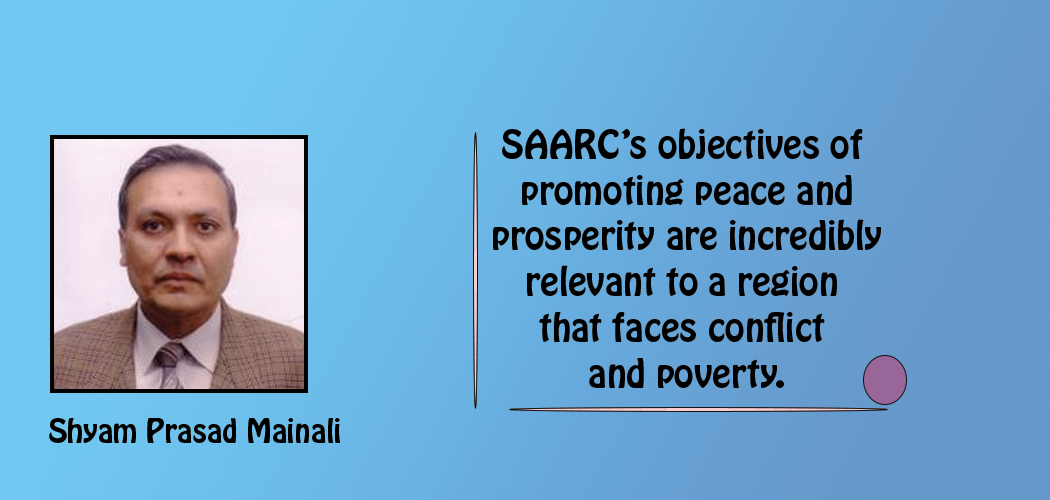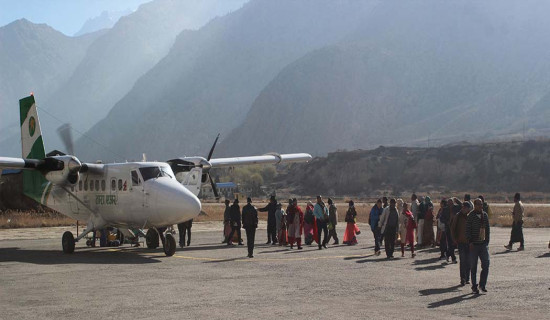- Thursday, 25 December 2025
SAARC: Challenges And Prospects
Shyam Prasad Mainali
The South Asian Association of Regional Cooperation (SAARC) was initially established with the noble objective of mitigating conflict, promoting political cooperation and economic integration in the South Asian region. However, it has been crippled by the conflict between the two nuclear powers-- India and Pakistan-- and has hindered these objectives. The 19th summit, which was to be held in Islamabad, was cancelled due to India-Pakistan tension over Jammu and Kashmir. The motto of its 18th summit held in Kathmandu was ‘Deeper Integration for Peace and Prosperity’. It took decision on the legal permission on SAARC Satellite scheme developed in all member states except Bangladesh and Pakistan.
Since 2014, SAARC has been constantly criticised for its lacklustre performance as agreements between nations are rare and track record of implementation of agreements is dismal. Regional and global political developments have also influenced SAARC, especially with the rise of China and India as global economic powers, retreat of the Western military from the region, as well as increased attention on social and environmental connectivity among member states. As a region with chronic stability issues and huge economic potential, SAARC could deliver towards global peace and prosperity.
Bilateral disputes
The extreme cultural diversity within SAARC also means that it is incredibly difficult to initiate a successful process of regional integration. The political situation within each member state has a negative impact on the efficacy of SAARC as governments find themselves embroiled in internal conflicts, corruption, political instability and more. The democratic values of several member states can also be called into question. The region is also facing severe economic inequality and large parts of the population lives in poverty. Inequality manifests itself through gender, class, caste, religion, ideology, among others.
With more focus on climate in recent years, environmental issues have also gained credence within the regional forum. The Himalayas form an integral part of the region as it is the source of major rivers in the whole region and disputes have occurred in the past. As the glaciers in the mountains dry up and water as a resource becomes scarcer, it may become a bigger issue in the future. Currently, flooding and hydropower generation are the prominent issues pertaining water. Rivers transcend borders. This means that hydropower becomes an issue which requires cross-border cooperation and investment.
As Nepal has been chairing SAARC since 2014, efforts to bring member states to the table would be appreciated within the region. Small sovereign states stand to benefit more from regional cooperation. However, due to their limited resources, it is up to the large powers in the region, India, to negotiate in good faith and to provide leadership within SAARC. The question that arises then is what sort of mechanism would enhance collaboration between the different member states.
This is a difficult question to answer. Due to regional rivalries and conflicting foreign policies, satisfying all members is challenging. Firstly, SAARC must reinforce its founding vision concerning economic prosperity and regional security and promote this within member states. SAARC must lay the foundations to develop a shared understanding of political cooperation within and around the multilateral organisation.
Ideally, SAARC must work towards addressing the mechanisms to deal with bilateral disputes between the member states. Innovative ways to foster cooperation and promote peace need to be explored which will be difficult due to existing regional polarity. Isolating more contentious issues such as terrorism and territorial disputes from less contested issues such as economic, social and development should be part of any future agenda. This can be seen in other regional organisations such as the Organisation of America (OAS).
Working on less contentious issues will also allow nations to cooperate and gain the trust of one another and lay the foundations to work on more quarrelsome issues. The issue of including China as an observer has also been a contentious one due to varying degrees of relations between member states and China. This is an issue that needs to be addressed without prejudice.
Rejuvenation
Whilst challenging, the rejuvenation of SAARC is not a herculean task as it is supposed to be. Despite its poor performance in the past, it would not be wise to dismantle SAARC. SAARC’s objectives of promoting peace and prosperity are incredibly relevant to a region that faces conflict and poverty. The organisation should be constituted in a manner which allows the pursuit of a common regional agenda as well as a forum for addressing bilateral issues. Lessons can be learnt from Europe as the region was once violent with constant wars but has now evolved into an integrated community due to the advent of the European Union (EU).
Due to the disputes of two powerful members, it has been the matter of serious concern that SAARC is being replaced by BIMSTEC. But both organisations are crucial in their purpose of establishment. There is a crisis of poor governance, terrorism, poverty, unemployment, economic slowdown, and climate. These issues all transcend borders and therefore it is only appropriate to create a strong regional multilateral institution which can be used as a forum to deal with these issues in a cooperative manner.
(Mainali is former government secretary.)
















